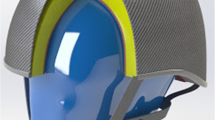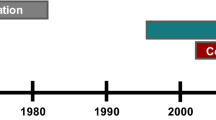Abstract
Current helmet certification tests involve linear impacts on rigid anvils. The associated kinematics by which a jockey falls from a horse while riding are believed to be fundamentally different to those in the certification tests, i.e., they involve oblique falls (falls at an angle) to compliant surfaces. This paper provides primary data from real-world equestrian accidents to characterise such kinematics, and constitutes a basis for future helmet developments and improvements in certification tests. The purpose of this study was to use well-documented video footage of equestrian accidents to characterise associated head injuries. 1119 equestrian accidents were collected from professionally regulated horse races and eventing during an 8-year period. Head injury incidents were analysed on a frame-by-frame basis to characterise the impact event, location, and surface. A total of 73 head injury incidents afforded a set of documentary data that were analysed: these involved 69 concussions, two hematomas, two orbital fractures, a fractured zygoma, and a fractured mandible. Based on the results of this study, priorities for future helmet designs and certification tests should be informed by the present findings. Since all of the observed cases involved the head impacting compliant surfaces (turf or sand) in an oblique manner, it is recommended that the protective capacity of equestrian helmets be assessed for oblique impacts to compliant surfaces. Furthermore, since the most frequently impacted locations were the lower region of the helmet and the mid-region on the back of the helmet, it is suggested that additional protection in these areas could be beneficial.






Similar content being viewed by others
References
Hitchens PL, Blizzard CL, Jones G, Day LM, Fell J (2009) The incidence of race-day jockey falls in Australia, 2002–2006. Med J Aust 190(2):83–86
Winkler EA, Yue JK, Burke JF, Chan AK, Dhall SS, Berger MS, Manley GT, Tarapore PE (2016) Adult sports-related traumatic brain injury in United States trauma centers. Neurosurg Focus 40(4):E4
Waller AE, Daniels JL, Weaver NL, Robinson P (2000) Jockey injuries in the United States. J Am Med Assoc 283(10):1326–1328
Turner M, McCrory P, Halley W (2002) Injuries in professional horse racing in Great Britain and the Republic of Ireland during 1992–2000. Br J Sports Med 36(6):403–409
Oikawa M (2004) The science of safety helmets-safety for helmets or safety for jockeys. Jpn Rac J 12(2):5–6
McCrory P, Turner M, LeMasson B, Bodere C, Allemandou A (2006) An analysis of injuries resulting from professional horse racing in France during 1991–2001: a comparison with injuries resulting from professional horse racing in Great Britain during 1992–2001. Br J Sports Med 40(7):614–618
Cowley S, Bowman B, Lawrance M (2007) Injuries in the Victorian thoroughbred racing industry. Br J Sports Med 41(10):639–643
Forero Rueda MA, Halley WL, Gilchrist MD (2010) Fall and injury incidence rates of jockeys while racing in Ireland, France and Britain. Injury 41(5):533–539
Foote C, McIntosh A, V’Landys P, Bulloch K (2011) Health and safety in Australian horse racing. ACT, Canberra
Kuhn EN, Miller JH, Feltman B, Powers AK, Sicking D, Johnston JMJ Jr (2017) Youth helmet design in sports with repetitive low- and medium-energy impacts: a systematic review. Sports Eng 20:29–40
Scher IS, Stepan LL, Hoover RW (2020) Head and neck injury potential during water sports falls: examining the effects of helmets. Sports Eng 23:7. https://doi.org/10.1007/s12283-020-0321-6
McKee AC, Gavett BE, Stern RA, Nowinski CJ, Cantu RC, Kowall NW, Perl DP, Hedley-Whyte ET, Price B, Sullivan C (2010) TDP-43 proteinopathy and motor neuron disease in chronic traumatic encephalopathy. J Neuropathol Exp Neurol 69(9):918–929
Lincoln AE, Caswell SV, Almquist JL, Dunn RE, Hinton RY (2013) Video incident analysis of concussions in boys’ high school lacrosse. Am J Sports Med 41(4):756–761
Caswell SV, Lincoln AE, Almquist JL, Dunn RE, Hinton RY (2012) Video incident analysis of head injuries in high school girls’ lacrosse. Am J Sports Med 40(4):756–762
Hutchison MG, Comper P, Meeuwisse WH, Echemendia RJ (2015) A systematic video analysis of National Hockey League (NHL) concussions, part I: who, when, where and what? Br J Sports Med 49(8):547–551
Post A, Koncan D, Kendall M, Cournoyer J, Clark JM, Kosziwka G, Chen W, de Grau AS, Hoshizaki TB (2018) Analysis of speed accuracy using video analysis software. Sports Eng 21:235–241
PAS015:2011 (2011) Helmets for equestrian use. British Standards Institution, London
ASTM F1163-15 (2015) Standard specification for protective headgear used in horse sports and horseback riding. ASTM F1163–15. American Society for Testing and Materials, West Conshohocken
EN 1384:2016 (2016) Helmets for equestrian activities. European CE Standards, British Standards Institution, London
Connor TA, Clark JM, Stewart M, McGoldrick A, Jayamohan J, Williams C, Seemungal B, Smith R, Burek R, Gilchrist MD (2019) Do equestrian helmets prevent concussion? A retrospective analysis of head injuries and helmet damage from real-world equestrian accidents. Sports Med Open 5:19
Clark JM, Post A, Hoshizaki TB, Gilchrist MD (2016) Protective capacity of ice hockey helmets against different impact events. Ann Biomed Eng 44(12):3693–3704
Clark JM, Hoshizaki TB, Gilchrist MD (2017) Protective capacity of an ice hockey goaltender helmet for three events associated with concussion. Comput Methods Biomech Biomed Eng 20(12):1299–1311
Meredith L, Ekman R, Thomson R (2018) Horse-related incidents and factors for predicting injuries to the head. BMJ Open Sport Exerc Med 4(1):e000398
Andersen TE, Larsen Ø, Tenga A, Engebretsen L, Bahr R (2003) Football incident analysis: a new video based method to describe injury mechanisms in professional football. Br J Sports Med 37(3):226–232
Gardner AJ, Iverson GL, Quinn TN, Makdissi M, Levi CR, Shultz SR, Wright DK, Stanwell P (2015) A preliminary video analysis of concussion in the National Rugby League. Brain Inj 29(10):1182–1185
Tierney GJ, Lawler J, Denvir K, McQuilkin K, Simms CK (2016) Risks associated with significant head impact events in elite rugby union. Brain Inj 30(11):1350–1361
Ueda Y, Yoshida K, Oikawa M (1993) Analyses of race accident conditions through use of patrol video. J Equine Vet Sci 13(12):707–710
Parkin T, Clegg P, French N, Proudman C, Riggs C, Singer E, Webbon P, Morgan K (2006) Analysis of horse race videos to identify intra-race risk factors for fatal distal limb fracture. Prev Vet Med 74(1):44–55
Clark JM, Hoshizaki TB, Ní Annaidh A, Gilchrist MD (2020) Equestrian helmet standards: do they represent real-world accident conditions? Ann Biomed Eng. https://doi.org/10.1007/s10439-020-02531-y
Clark JM, Adanty K, Post A, Hoshizaki TB, Clissold J, McGoldrick A, Hill J, Ní Annaidh A, Gilchrist MD (2020) Proposed injury thresholds for concussion in equestrian sports. J Sci Med Sport 23(3):222–236
EN 1384:1997 (1997) Specification for helmets for equestrian activities. National Standards Authority of Ireland, Dublin
Post A, Koncan D, Kendall M, Cournoyer J, Clark JM, Kosiwka G, Chen W, de Grau A, Hoshizaki TB (2018) Analysis of speed accuracy using video analysis software. Sports Eng 21(3):235–241
Clark JM, Taylor K, Post A, Hoshizaki TB, Gilchrist MD (2018) Comparison of ice hockey goaltender helmets for concussion type impacts. Ann Biomed Eng 46(7):986–1000
Tanini I, Zimmerman K, Kemp S, Piantini S, Pierini M, Sharp D, Ghajari M (2018) Computational modelling of traumatic brain injury in elite Rugby Union. In: 8th World congress of biomechanics, Dublin, Ireland
Campolettano ET, Gellner RA, Rowson S (2018) Relationship between impact velocity and resulting head accelerations during head impacts in youth football. In: IRCOBI conference, Athens, Greece, pp 326–333
Pellman EJ, Viano DC, Tucker AM, Casson IR, Waeckerle JF (2003) Concussion in professional football: reconstruction of game impacts and injuries. Neurosurgery 53(4):799–814
Mihalik J, Guskiewicz K, Jeffries J, Greenwald R, Marshall S (2008) Characteristics of head impacts sustained by youth ice hockey players. Proc Inst Mech Eng Part P J Sports Eng Technol 222(1):45–52
McIntosh AS, Dowdall B (1992) A field and laboratory study of the performance of pedal cycle helmets in real accidents. In: Proceedings of IRCOBI Conference, September 9–11, Verona, Italy, pp 51–60
Crisco JJ, Fiore R, Beckwith JG, Chu JJ, Brolinson PG, Duma S, McAllister TW, Duhaime A-C, Greenwald RM (2010) Frequency and location of head impact exposures in individual collegiate football players. J Athlet Train 45(6):549–559
Lloyd R (1987) Riding and other equestrian injuries: considerable severity. Br J Sports Med 21(1):22–24
Mills N, Whitlock M (1989) Performance of horse-riding helmets in frontal and side impacts. Injury 20(4):189–192
Forero Rueda MA, Cui L, Gilchrist MD (2011) Finite element modelling of equestrian helmet impacts exposes the need to address rotational kinematics in future helmet designs. Comput Methods Biomech Biomed Eng 14(12):1021–1031
Connor TA, Stewart M, Burek R, Gilchrist MD (2019) Influence of headform mass and inertia on the response to oblique impacts. Int J Crashworthiness 24(6):677–698
Halldin P (2015) Proposal for a new test method measuring the head kinematics in angled helmeted impacts. Work on CEN TC158-WG11
Stigson H, Rizzi M, Ydenius A, Engstroem E, Kullgren A (2017) Consumer testing of bicycle helmets. In: IRCOBI conference, Antwerp, Belgium, pp 13–15
Bland ML, McNally C, Rowson S (2018) Differences in impact performance of bicycle helmets during oblique impacts. J Biomech Eng 140(9):091005
Funk JR, Duma S, Manoogian S, Rowson S (2007) Biomechanical risk estimates for mild traumatic brain injury. In: Annual Proceedings. Association for the Advancement of Automotive Medicine, p 343
Rowson S, Duma SM, Beckwith JG, Chu JJ, Greenwald RM, Crisco JJ, Brolinson PG, Duhaime A-C, McAllister TW, Maerlender AC (2012) Rotational head kinematics in football impacts: an injury risk function for concussion. Ann Biomed Eng 40(1):1–13
Hernandez F, Wu LC, Yip MC, Laksari K, Hoffman AR, Lopez JR, Grant GA, Kleiven S, Camarillo DB (2015) Six degree-of-freedom measurements of human mild traumatic brain injury. Ann Biomed Eng 43(8):1918–1934
Zhang L, Yang KH, King AI (2004) A proposed injury threshold for mild traumatic brain injury. J Biomech Eng 126(2):226–236
McIntosh AS, Patton DA, Fréchède B, Pierré P-A, Ferry E, Barthels T (2014) The biomechanics of concussion in unhelmeted football players in Australia: a case–control study. BMJ Open 4(5):e005078
Forero Rueda MA, Gilchrist MD (2009) Comparative multibody dynamic analysis of falls from playground climbing frames. Forensic Sci Int 191(1–3):52–57
Gilchrist MD, O'Donoghue D, Horgan TJ (2001) A two-dimensional analysis of the biomechanics of frontal and occipital head impact injuries. Int J Crashworthiness 6(2):253–262
SNELL:M2015 (2015) For use with motorcycles and other motorized vehicles. Snell Memorial Foundation, North Highlands
Ueeck BA, Dierks EJ, Homer LD, Potter B (2004) Patterns of maxillofacial injuries related to interaction with horses. J Oral Maxillofac Surg 62(6):693–696
NOCSAE (2017) Standard test method and equipment used in evaluating the performance characteristics of headgear/equipment. National Operating Committee on Standards for Athletic Equipment, Overland Park
Connor TA, Clark JM, Brama P, Stewart M, Ní Annaidh A, Gilchrist MD (2020) An evidence basis for future equestrian helmet lateral crush certification tests. Appl Sci 10(7):2623
Ling C, Ivens J, Cardiff P, Gilchrist MD (2018) Deformation response of EPS foam under combined compression-shear loading. Part I: experimental design and quasi-static tests. Int J Mech Sci 144:480–489
Ling C, Ivens J, Cardiff P, Gilchrist MD (2018) Deformation response of EPS foam under combined compression-shear loading. Part II: high strain rate dynamic tests. Int J Mech Sci 145:9–23
Acknowledgements
This research has received funding from the European Union’s Horizon 2020 research and innovation programme under the Marie Skłodowska-Curie grant agreement no. 642662.
Author information
Authors and Affiliations
Corresponding author
Ethics declarations
Conflict of interest
The authors report no conflict of interest.
Additional information
Publisher's Note
Springer Nature remains neutral with regard to jurisdictional claims in published maps and institutional affiliations.
Rights and permissions
About this article
Cite this article
Clark, J.M., Williams, C., Clissold, J. et al. Video analysis of head injury incidents in equestrian sports. Sports Eng 23, 10 (2020). https://doi.org/10.1007/s12283-020-00323-0
Published:
DOI: https://doi.org/10.1007/s12283-020-00323-0




